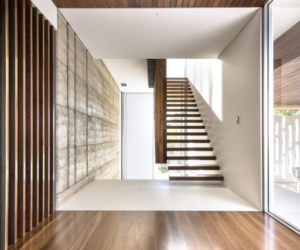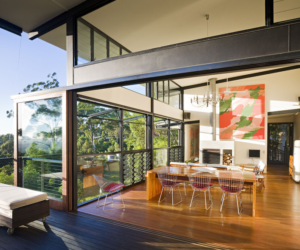Interior & Exterior Cladding
Timber cladding is experiencing somewhat of a renaissance there is no denying this is an affair that will continue to prevail.
Traditionally timber cladding was predominantly chosen for reasons of practicality, durability and function over any significant design or aesthetic application, specifically noting cost and ease of installation.
With an emerging social consciousness clearly focused on sustainability and the environment, timber cladding is experiencing somewhat of a revival as a popular choice among many builders and architects.
With many landmark commercial developments striving to achieve a ‘green’ status, in particular a Green Star rating from The Green Building Council of Australia, the use of timber cladding is high on the agenda to significantly enhance such developments.
Today, the decision to use timber cladding appears to be more so motivated by aesthetics and design, attributing the renewable, sustainable, and green sensation it lends to projects where applied.
Even the term ‘timber cladding’ has taken on a broadened definition with the increasingly creative and inspired ways it is being utilized.
In some cases timber cladding is used to cover harsh concrete facades, providing a very natural and organic vitality to a surface that would otherwise be seen as cold and sterile.
With varying profiles that dictate how the cladding is installed, whether vertically, horizontally or at an angle, the choices for building and design applications are endless.
The natural characteristics of timber make cladding a perfect practical, beautiful and green complement to any project.
Timber cladding offers a unique warmth and style that simply cannot be matched by other materials.
Species include:
- Messmate
- Tallowwood
- Blackbutt
- Spotted Gum
- Ironbark
Green talks Timber

